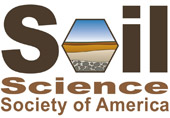Can Brake Ferns (Pteris vittata) Efficiently Remediate Urban Soils Contaminated with Arsenic? Optimizing Phytoremediation through Fertilizer Use.
Poster Number 16
See more from this Division: PosterSee more from this Session: Urban Soil Ecology and Ecosystem Services
As urban agriculture reclaims contaminated land, soil remediation methods that are cost-effective, sustainable, and broadly applicable are urgently needed. If proven viable, in situ remediation methods could be combined with urban agriculture to decrease exposure to legacy contaminants, improve urban soil health, and increase local food production. In an on-going phytoremediation field study, brake ferns (Pteris vittata L.) are planted in a vacant lot of interest to urban farmers: an abandoned railroad right-of-way moderately contaminated with arsenic (81 ppm). To assess fertilizer impact on brake fern performance, five amendments, including ammonium sulfate, blood meal, rock phosphate, bone meal, and compost, were applied to separate fern plots. Preliminary results of brake fern arsenic accumulation after nine months of growth, and total and extractable soil arsenic, are presented. Effects of the fertilizers on fern frond biomass and arsenic content are analyzed to suggest methods for increasing efficiency of P. vittata arsenic uptake. Timelines for arsenic remediation, and possibilities for integrating phytoremediation into concurrent agricultural production, are explored.
See more from this Session: Urban Soil Ecology and Ecosystem Services
